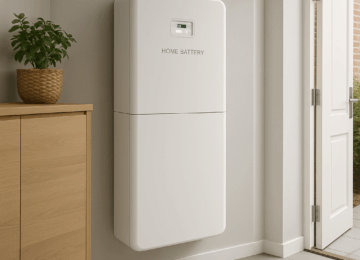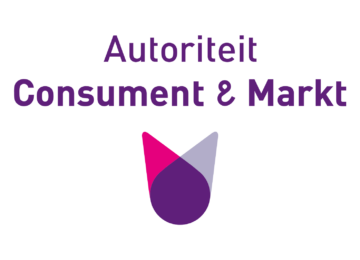10 Tips for Buying a Home Battery
With the growing interest in solar power and self-sufficiency, home batteries are becoming increasingly popular. But how do you know which battery is right for you and what to look for? In this item we share ten essential tips for buying a home battery. Whether you want to increase your self-consumption or have a backup for power outages, proper preparation is essential.
Consider what you want to use the home battery for
Before purchasing a home battery, it is essential to determine how much energy you consume, at what time, and what you would like to use the home battery for. There are currently three main functions: increasing self-consumption of solar power, serving as a backup supply for power outages, and trading in electricity markets.
Choose the right battery type
Several types of batteries are available, including the best-known lithium-ion (NMC), lithium iron phosphate (LFP), lead-acid and nickel-iron. Each type has its own advantages and disadvantages in terms of longevity, safety, maintenance, price and environmental friendliness. Be sure to read up beforehand and compare several websites.
Compare the cost per kWh
The investment in a home battery is often between €500 and €1000 euros per kWh of storage. Ask suppliers what calculations they use when they make you an offer, and how they think the offer fits your energy consumption. Bigger seems better at first glance, but the payback depends more on developments beyond your control (see 4.). Power (in kW) says something about how much power you can supply at the same time, and thus how many devices can run on your battery at the same time. The capacity (in kWh) says something about how much can be stored, and thus how long the devices can run with the power from your battery.
Don't focus on short payback periods
Using the home battery exclusively for your own energy needs still often provides an unprofitable business case. To make the payback of home batteries attractive in the short term, trading on various electricity markets - such as the imbalance market - is lucrative. The question is how long these earning markets will remain attractive, as other batteries will increasingly compete on these as well. Therefore, don't be quick to count yourself rich with a home battery in the short term.
Check warranty terms and maintenance contracts
Read the warranty terms carefully. These should state what kind of performance you can expect, such as the number of cycles the battery should be able to go through and how much capacity is guaranteed in the process. Also inquire and verify that your installer has taken the brand-specific training from the home battery manufacturer. This is important for most warranty terms from the manufacturer. A clear maintenance contract can help you avoid unexpected costs.
Ensure optimal integration with your solar panels and inverter
A home battery works best when it integrates seamlessly with your existing solar panels and inverter. This ensures higher self-consumption of your own generated power and can help dampen peak loads on the grid. Make sure your installer is experienced with this integration to maximize the return on your investment. In any case, you'll need a hybrid inverter so that the solar panels and home battery can be connected together.
Consider a Smart Energy Management System (HEMS).
A Home Energy Management System (HEMS) automates the process of charging and discharging your battery in conjunction with other devices in your home (for example, the charger for your electric car) that can be controlled. This system can respond dynamically to variable energy rates: charging when prices are low and discharging when rates are higher. This allows you to get the maximum return on your investment.
Check the adequacy of your meter box and wiring
Home battery connection is through the meter box. It is important to check that the wiring and power groups can handle the extra load. A combination of solar panels, batteries and possibly a charging station can overload the meter box. Modifications to the meter box may be necessary to continue to safely power the devices. There are also "plug-and-play" home batteries that can be plugged directly into the wall outlet. Even for these systems, it is important that these batteries be safely installed by a licensed installer (see item 10).
Pay extra attention to safety and installation
Safe placement of home batteries can be a real challenge for installers. It is not an "apples-to-apples" job: the battery must be located in a place with adequate ventilation, away from living areas, water pipes and escape routes. Proper integration into the existing electrical system and modifying the meter box according to applicable standards are crucial to avoid risks such as overheating or fire. In addition, some home batteries also make noise, in which case the location of installation is especially important. The risks differ for each type of battery (see point 2.), so be well informed about this. On the fire department website find more information about fire safety of home batteries.
Be well informed and engage an expert
A home battery is a complex system that combines technical, economic and safety aspects. So get advice from certified installers and experts who are up to date with the latest developments and regulations. Good preparation and professional installation are essential to make the most of the investment and to guarantee safety. There are several ways for installers to demonstrate a quality standard - a certification from InstallQ (via realinstaller.com) is the most common.





